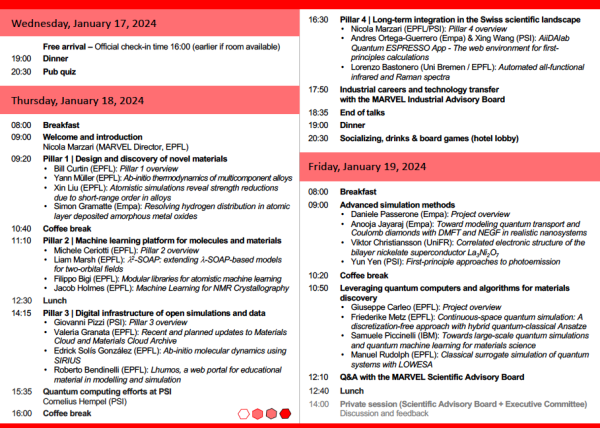The MARVEL 2024 Review and Retreat
by Nicola Nosengo, NCCR MARVEL
The whole MARVEL community gathered in Grindelwald, in the Bern canton, from 17 to 19 January for the NCCR's Review and Retreat. Involving over 130 people – including PIs, postdocs, PhD students and members of the project’s Scientific and Industrial advisory boards – the retreat marked an important moment for the project: the participants took stock of Phase III, that is now halfway through, planned for the next and final two years of the project, and looked towards the project’s legacy.
Director Nicola Marzari opened the first day by reminding that the key goal of this third phase of the project is to build a digital infrastructure for materials science and to show the community that it can become a powerful accelerator of research, while keeping pace of a rapidly evolving scenario where machine learning and large language models are changing the rules of the game.
Marzari also challenged all groups in the consortium to think critically about the usability and long-term sustainability of open science tools such as the Materials Cloud and AiiDA, on how to make advanced simulation methods available to a larger community, and on the viability of quantum computing for materials science.
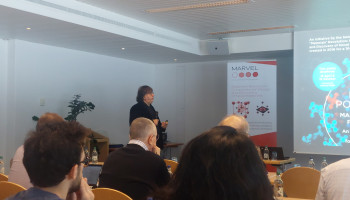
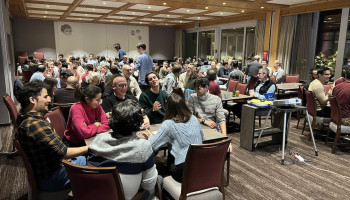
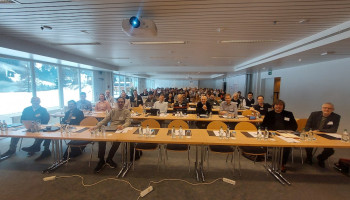
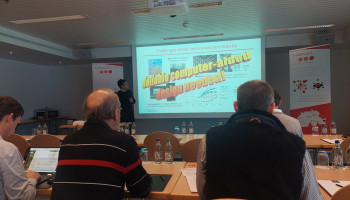
Pictures: NCCR MARVEL
The sessions were then structured around the main pillars of NCCR MARVEL: on the first day, the sessions on Design and discovery of novel materials, Machine learning for molecules and materials, Digital infrastructure of open simulations and data, Long-term integration in the Swiss scientific landscape were introduced respectively by William Curtin, Michele Ceriotti, Giovanni Pizzi, Nicola Marzari, all of whom were followed by presentations of individual lab members focussing on key results and case studies.
Some highlights of the day included the application of machine learning to nuclear-magnetic-resonance crystallography for the study of pharmaceutical molecules, the development of the Lhumos learning portal, the ongoing study of new Hf-Mo-Nb-Ti alloys, the growth of quantum computing facilities at the Paul Scherrer Institute, a massive workflow for verification of DFT codes made available to the community.
The second day was dedicated to the Advanced simulation methods and Quantum computing pillars, introduced by Daniele Passerone and Giuseppe Carleo respectively, with focus on topics such as graphene nanoribbons, superconducting nickelates, algorithms for combining classical and quantum machine learning.
The programme also included two highly-appreciated opportunities for all MARVEL members to exchange views directly with members of the Industrial advisory board (in particular, on the opportunities and challenges of career transitions from academia to industry) and of the Scientific advisory board.
Detailed program
The detailed program can be viewed below (click on image to expand).
Low-volume newsletters, targeted to the scientific and industrial communities.
Subscribe to our newsletter
